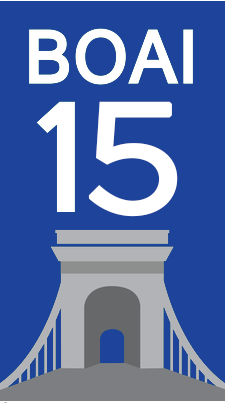1 Overview of Open Access Scholarly Publishing
Jill Emery

Open access as a shared concept for Europe began with an event held in Budapest in 2002 called the Budapest Open Access Initiative. This initiative called for “free and unrestrictive online availability” of scholarly works. The declaration asserted that scholars give their work to the world without expectation of payment and that there be no costs to anyone wanting to read this scholarship. Self archiving of scholarship was championed along with the creation of new openly available journals that are funded by foundations, institutions, and governments. This concept was reiterated in Germany in 2003 with the Berlin Declaration. In this declaration, it is noted to support the transition to the electronic open access paradigm that the signing organizations commit to “advocating that open access publication be recognized in promotion and tenure evaluation”. In the nearly two decades since the initiative was announced & the declaration made, open access publishing has become a codified part of academic scholarship.
The Directory of Open Access Journals currently indexes over 19,000 open access journals and the Directory of Open Access Books indexes 70,000 peer-reviewed academic books. Open access publication is an accepted model of scholarship dissemination throughout the world. There are still various disagreements about how scholarship is made openly available and who is responsible for the costs associated with open access publication. In light of these disagreements, the European Union undertook an initiative in 2012 called Horizon 2020. The intent was to try to make all scholarly publication from European Union nations openly available by the year 2020. In anticipation of the Horizon 2020 goal not being met by European governments due to significant costs associated with the costs to publish openly with legacy scholarly commercial publishers, a secondary initiative was launched by funding bodies in Europe in 2018, called Plan S. The intent of this plan was to map out how foundation and research funders could push the legacy commercial scholarly publishers into compliance with open access publishing by putting pressure on more immediate open publication without any time embargoes or lags. In addition, they also established ten Plan S Principles that include not publishing in hybrid journals (journals sold as subscriptions and where article processing charges are also charged to make individual articles open) and the development of open access infrastructures if open access journals do not exist for the discipline or subject area.

In 2013, in the United State of America, the White House Office of Science & Technology Policy (OSTP) issued a policy memorandum requesting that research and data produced from federal funded research initiatives be made freely available to the public. This public policy declaration allows for up to a 12 month embargo of research from most funding agencies. In order to be in compliance with these agencies, Portland State University federal grant recipients need to pass compliance audits indicating funded research and data has been made openly available once the embargo period expires. However, in August 2022, the White House Office of Science and Technology Policy issued a second policy memorandum calling for all federally funded research be published without embargo by 2025. This policy document overrides the initial one and applies more broadly to federal agencies beyond those engaged just with scientific research outputs. To learn more, the OSTP has established a Frequently Asked Questions: 2022 Public Access Policy Guidance. In addition to the OSTP Mandates, other major funders in the U.S. such as the Bill and Melinda Gates Foundation enacted immediate open access publication policies. In addition, they have become members of Coalition S and are following the Plan S Principles.
In Latin America, open access scholarly dissemination has been a non-commercial enterprise supported largely by academic institutions. The platforms and hosting sites for open access content in Latin America include the following entities: AmeliCA, Scielo, Latindex, and La Referencia. The Latin American models of OA have tended towards inclusion of regional languages and local relevance. There are many scholars in Latin America and from other parts of the world, who are seriously concerned that the prevalence and quick adoption of OA pricing models coming from Europe and North America will have a detrimental impact on the structures and forms of scholarly dissemination pre-established in other parts of the world.
There are scholars and journalists who wonder if open access publishing is on the right path to meeting the goals established in Budapest in 2002. There are extremely important and valid considerations raised within the scholarly community regarding the impacts of open access such as the negative impacts of open access on the scholarly practice in various areas of the world and if cost containment or affordability of academic scholarship is still a goal? With the advent of “transformative or read and publish agreements” now offered by legacy scholarly publishers, how are “fair deals” being defined? Scholarly publication is in the midst of a second wave of transition (the first wave being the move from print publication to online access which occurred between 2000-2010). The best efforts made by the University Library are to experiment with various models currently available to allow us to determine what we want our path forward to be.

